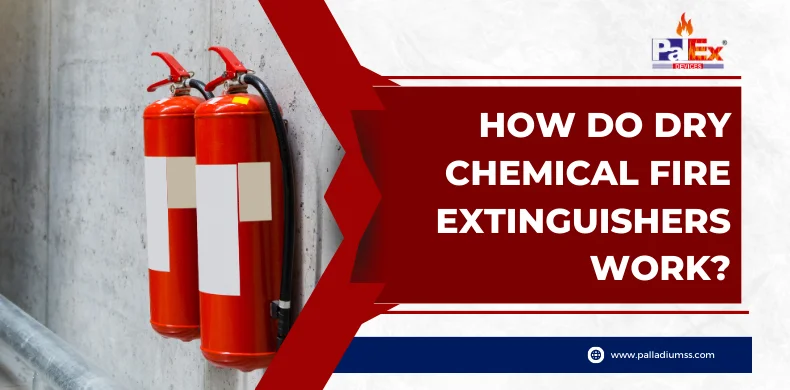Every device has advantages and disadvantages; some can be used in open spaces, others can close spaces, some are used in electric fires, and others are used in other kinds.
They are used in situations with a large amount of electrical equipment or sensitive electronics. They are also helpful in cases where the risk of a fire or explosion is high.
A clean agent extinguisher works by removing heat from the fire, which in turn prevents it from spreading. They do not release harmful chemicals into the air, so they are perfect for use with computers and other sensitive equipment.
What is the Difference Between Clean Agent and Regular Fire Extinguishers
Clean agents are non-toxic and non-corrosive gases used to create fires. They work by removing the oxygen from the fire, thus preventing combustion. They are also known as “clean” because they don’t leave any residue or damage in their wake.
Different Types of Fire Extinguishers
There are three types of Clean Agent Fire Extinguishers in the market, and the list is as follows:
Cleaning Agent – 2kg
This type of extinguisher is small and can be easily carried around, with having an epoxy-polyester powder coating resulting in anti-corrosive inhibitor properties. This type of extinguisher is semi-portable and can be easily carried by one person. cleaning agent – 2kg has a highly durable stainless steel hose and an epoxy-polyester powder coating for anti-corrosive inhibitor properties. The agent is effective on Class A, B, and C fires and work from -10 degree celsius to 60 degrees Celcius.
Cleaning Agent – 4kg
This type of extinguisher is double the size of the 2kg extinguisher and comes with a trolley for easy manoeuvrability. It is also semi-portable, with a stainless steel hose that is also highly durable. The cleaning agent 4kg extinguisher is effective on Class A, B, and C fires and can work in temperatures ranging from -10 to 60 degrees. It has a corrosion-resistant cabinet and an adjustable nozzle. The 6kg extinguisher is effective on Class A, B, and C fires and can work in temperatures ranging from -10 to 60 degrees Celsius.
Cleaning Agent – 6kg
Cylinder Length (mm): 430 mm Cylinder Diameter (mm): 178 mm Discharge Hose Length (mm): 1.5 M Discharge Hose Diameter (mm): 25 mm Total Weight (kg): 6.0 Kg (approx.)
Areas Where Clean Agent Extinguishers are Effective & Where they are not Effective
Clean agent extinguishers are often used in areas with a high probability of an electrical fire. For example, clean agent extinguishers are often used in data centres, server rooms, computer rooms, and offices. Clean agent extinguishers are also effective in places with a risk of an explosion, such as chemical plants and oil refineries.
The following places should not be used with clean agent extinguishing systems: kitchens, garages, construction sites or other areas with combustible materials.
Advantages of Clean Agent Extinguishers
A clean agent is a firefighting technique that does not require water from the hose or a fire truck. It usually consists of substances like Carbon Dioxide, Nitrogen Gas, and Halon. These agents can be used in buildings and smaller structures such as homes.
- They are effective on Class A, B, and C fires.
- They are effective on most types of electrical equipment.
- They don’t leave any residue or damage in their wake.
- They are effective in areas with a high probability of an electrical fire.
- They are effective in places with a risk of an explosion.
Conclusion
Clean Agent Extinguishers are an effective type of firefighting agent that is effective on most types of fires. They are often used in areas with a high probability of an electrical fire, such as data centres, server rooms, computer rooms, and offices. They are also effective in places with a risk of an explosion, such as chemical plants and oil refineries.
A clean agent extinguisher is an excellent option for fighting fires in places where water-based extinguishers would be ineffective or cause more damage. They are also a good choice for places where you want to avoid leaving a mess or where the environment needs to be kept clean. They are also effective against various fire types, including electrical fires.
Also read :How do Dry Chemical Fire Extinguishers Work?
Need Professional Guidance? Contact us Now!
At Palladium Safety Solutions, we provide comprehensive fire safety services. We carry a wide range of fire extinguishers, including clean agent extinguishers, and can help you choose the right type for your needs. We also provide fire safety training to ensure your employees know how to use the extinguishers properly. Contact us today to learn more about our fire safety services!










